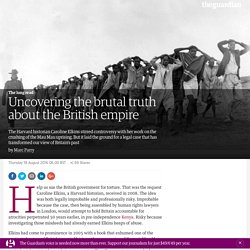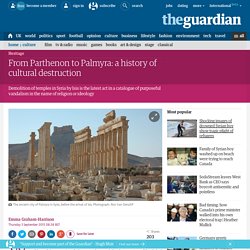

Fotovergleich: Die Berliner Mauer damals und heute. Verschieben Leaflet | 1989: Senatsv. für Stadtentw. | 2019: Geoportal Berlin / OK Lab, Maptiler Zur Karte: 1989 und heute erkunden Fotovergleich: Berlin mit und ohne Mauer Die Berliner Mauer ist fast komplett aus dem Stadtbild verschwunden.

So sah die Stadt einst entlang der Mauer aus, und so ist es heute dort - direkt vor Ort und im Vergleich auf einer interaktiven Luftbild-Karte. Boesebrücke in der Bornholmer Straße Gesundbrunnen / Prenzlauer Berg JuxtaposeJS Fotos: picture alliance / Jörg Krauthöfer, BM Jahrzehntelang war die Bösebrücke ein für DDR-Bürger undurchdringbarer Grenzübergang, schwer bewacht und mit Panzersperren gesichert. Harzer / Ecke Bouchéstraße Alt-Treptow / Neukölln Fotos: picture alliance, AP / Jörg Krauthöfer, BM Hier konnten sich Ost und West in die Fenster gucken, aber nicht die Straße überqueren. 1983 gelang in der Bouchéstraße eine spektakuläre Flucht mit einem Seil von Haus zu Haus.
Mapped: Five years of destruction in Aleppo - Washington Post. Mekhloufi, le football et la révolution - Algérie, France, Rachid Mekhloufi. Alors qu'une carrière exceptionnelle l'attendait en France, Rachid Mekhloufi a tout plaqué en 1958, tirant même un trait sur une Coupe du monde, pour intégrer l'équipe créée par le FLN.

Une équipe née pour défendre la cause de l'indépendance de l'Algérie, que Mekhloufi et d'autres joueurs ont rejointe après une évasion rocambolesque. Le 8 mai 1945, la France pousse l'un des plus gros « ouf » de soulagement de sa longue histoire : l'Allemagne vient de capituler. Enfin. Cinq ans après le traumatisme de la débâcle de juin 1940, des millions de Français sortent dans les rues pour défiler et célébrer, y compris en Algérie – alors département français. Une occasion historique de se montrer que les partis nationalistes algériens ne rateraient pour rien au monde. Une équipe dans la guerre. Bringing up the bodies in Bosnia. They are the unquiet dead.

Laid out in rows inside a former industrial building on the edge of the Bosnian town of Sanski Most. Some of the skeletons are almost complete, others just a pelvic bone and some assorted ribs, arranged as though to await the arrival of more. This place was used to process wood before Bosnia’s war of the early 1990s, and now it processes – it endeavours to assemble – the dead. The remains are laid out on raised trays, and at the foot of each lies possessions found with the body when it was exhumed, invariably from a mass grave. So to walk through this hall of death is also to walk through these people’s lives and last moments. In this building, run by the Krajina Identification Project, there is diligent purpose. This facility is one in a chain that seeks to answer that question, the work of which is the most remarkable entwinement of science, human rights and justice in the world today.
Uncovering the brutal truth about the British empire. Help us sue the British government for torture.

That was the request Caroline Elkins, a Harvard historian, received in 2008. The idea was both legally improbable and professionally risky. Improbable because the case, then being assembled by human rights lawyers in London, would attempt to hold Britain accountable for atrocities perpetrated 50 years earlier, in pre-independence Kenya. Risky because investigating those misdeeds had already earned Elkins heaps of abuse. Elkins had come to prominence in 2005 with a book that exhumed one of the nastiest chapters of British imperial history: the suppression of Kenya’s Mau Mau rebellion.
It was also an unconventional first book for a junior scholar. Ansel Adams’s Images of Japanese Internment Camp Manzanar. Ansel Adams’s Subversive Images of Japanese Internment The photographer was not supposed to capture the barbed wire surrounding the Manzanar War Relocation Center, but he found a way to show the truth.

When Uncle Sam Babysat Dick and Jane During World War II the United States government operated a heavily-subsidized childcare program—the likes of which Americans haven’t seen since. Pierre Laborie, un historien “trouble-mémoire” CC Wikimedia Commons Bundesarchiv, Bild Selon Pierre Laborie, « le rôle de l’historien n’est pas seulement de distinguer la mémoire de l’histoire, de séparer le vrai du faux, mais de faire de cette mémoire un objet d’histoire, de s’interroger sur l’usage du faux comme du vrai et sur le sens que les acteurs veulent ainsi donner au passé et leur passé (…) La proximité de nécessité ou de sympathie, aussi forte soit-elle, ne peut en aucune façon servir à confondre les terrains et à escamoter les distances.

Il ne s’agit pas de légitimer ce qui est maintenant, mais de pouvoir témoigner de ce qui a été, et de la façon dont cela était. Etrangers dans la Résistance. Des étrangers risquant leur vie pour la liberté… et pour la France ? Ah vous avez oublié ! Alors lisez attentivement ce qui suit et laissez-vous emporter chez les « métèques » et autres « terroristes » par le film-recherche de Rolande Trempé Mémoires de résistance : FTP-MOI.
Dans ce « documentaire historiographique » réalisé en 1992 en collaboration avec Raphaël Réquéna, Rolande Trempé donne la parole aux étrangers émigrés en France et qui ont pour caractéristique commune de s’être battus au sein de la Résistance durant la Deuxième Guerre Mondiale. En historienne pionnière de l’utilisation du documentaire comme moyen de fixer la parole et de mettre en lumière le témoignage dans une visée historique, elle prend pour exemple la branche lyonnaise et grenobloise des Francs-Tireurs Partisans-Main-d’Oeuvre Immigrée (FTP-MOI), le groupe Carmagnole-Liberté. Building the atom bomb: the full story of the Nevada Test Site.
The Book of Daniel: a triumph of execution. BALLAST Révolutionnaires et ouvriers contre la Première Guerre mondiale. Meet the Rwandan teenager playing cricket in Africa's T20 Cup. It’s fair to say that Rwanda is not a hothouse of cricketing talent.

As things stand the country only has one pitch, The Kicukiro Oval – although that number is set to double with the construction of its first proper stadium. Yet Rwanda will be represented at Africa’s inaugural T2o Cup, which begins tomorrow, when a spinner whose parents fled the war takes to the pitch for a South African team. Emmanuel Sebareme, 19, learned his cricket on the streets of Cape Town after his parents left Rwanda in the 1980s. They walked through Malawi and the Democratic Republic of Congo, where Sebareme was born, before finally reaching South Africa when the boy was five years old.
Now Sebareme will represent Western Province against Zimbabwe in the new event, which serves as a curtain-raiser to the African 2015-16 season. “We basically walked all the way from Rwanda,” Sebareme said. Once embedded in his new country Sebarame picked up the game on the streets, using a tennis ball and bins for stumps. From Parthenon to Palmyra: a history of cultural destruction. War has always taken a toll on heritage as well as human lives, from the sacking of Constantinople by crusaders and the destruction of Baghdad by Mongol armies, to the second world war firebombing of Coventry that claimed its Gothic cathedral.

But the demolition of the temples at Palmyra in Syria by Isis is the latest act in an even darker history of purposeful vandalism in the name of religion or ideology. It stretches back to the earliest days of recorded human history, with the Bible noting the destruction of religious statues in the Syrian region centuries before the Christian era. Here are details of a few of the lost treasures, and the groups that destroyed them. Libraries of Timbuktu The Islamist rebel group Ansar Dine torched libraries of priceless manuscripts dating back to the 13th century when they took control of Timbuktu and destroyed ancient mausoleums that were part of a world heritage site.
Buddhas in Bamiyan. 127, rue de la Garenne - ARTE. Bosnia’s survivors gather and grieve as the soil endlessly gives up its dead. The dust has settled after being kicked up by crowds converging last month on Srebrenica, the site of Europe’s worst massacre since the Third Reich.

But the unhealed pain remains and is repeated across this country as survivors and bereaved families gather, during this sweltering summer season of commemorations, at Bosnia’s hundreds of other mass graves. And the search continues for thousands still buried in Bosnia’s soil more than 20 years on – 1,000 from Srebrenica and an estimated 7,000 others, whose remains horribly appear, gradually, every so often. The president of the camp prisoners association for the Sanski Most area, Nihad Kljucanin, told a crowd gathered on the mountainside beside another mass grave at Hrastova Glavica last Wednesday: “If we find them all, which we must one day, the map of our land is covered with graves.”
“There’s a connection between economic robbery and the trauma of the past,” he said. Le procès Pétain en images.